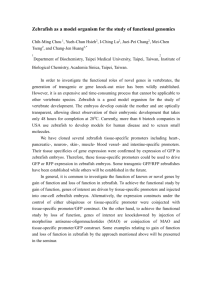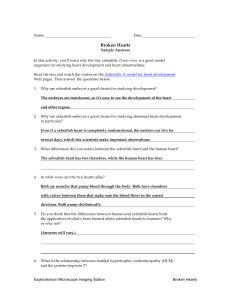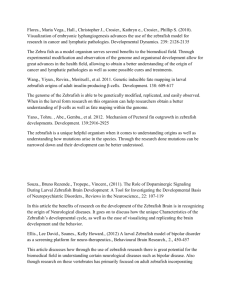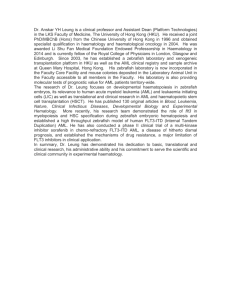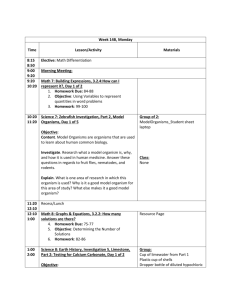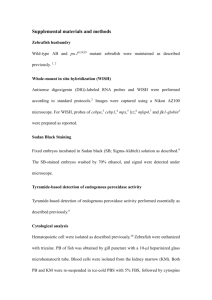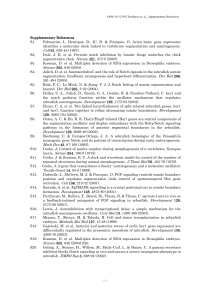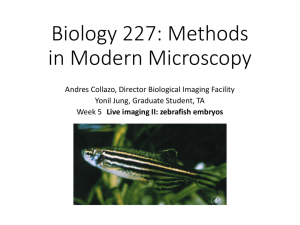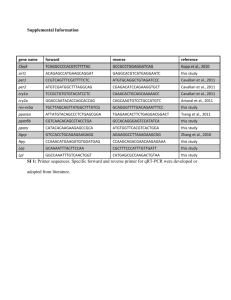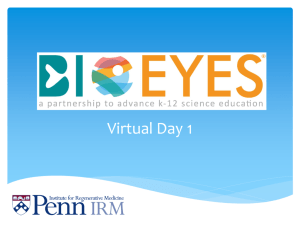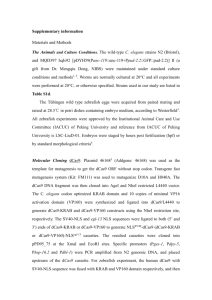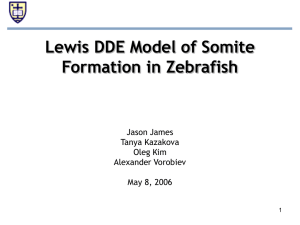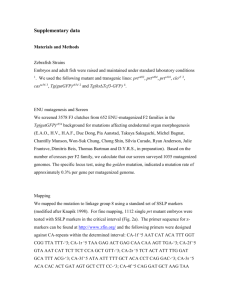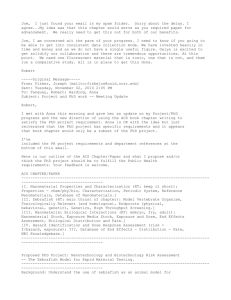Week 13A, Monday Time Lesson/Activity Materials 8:15 8:50
advertisement
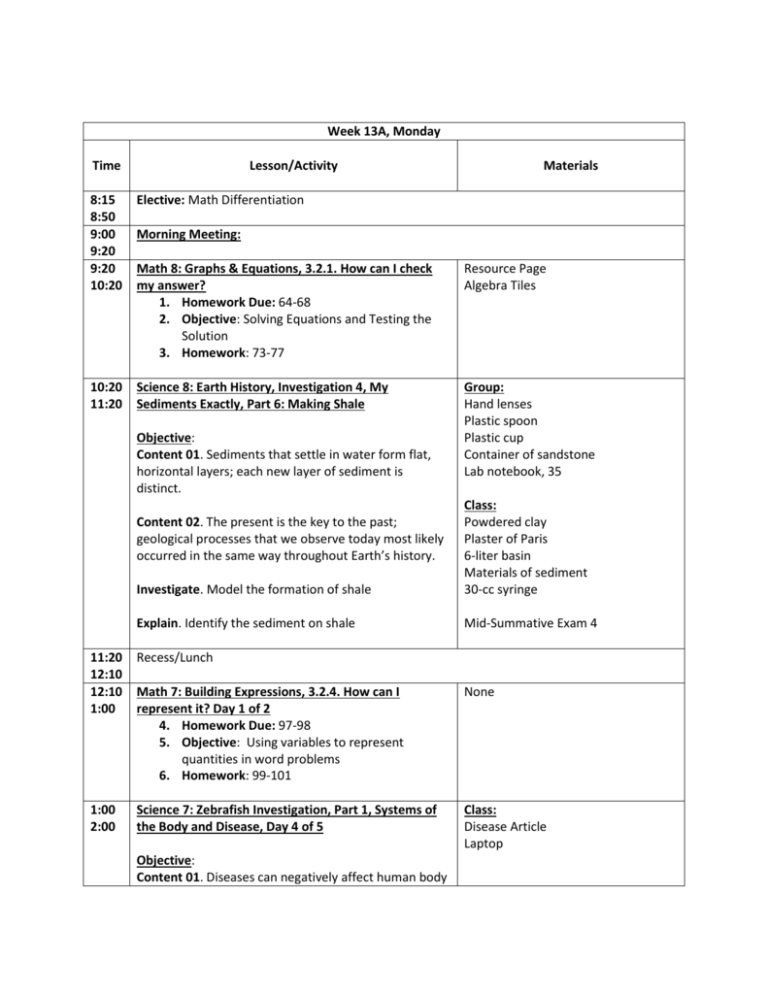
Week 13A, Monday Time Lesson/Activity Materials 8:15 8:50 9:00 9:20 9:20 10:20 Elective: Math Differentiation Math 8: Graphs & Equations, 3.2.1. How can I check my answer? 1. Homework Due: 64-68 2. Objective: Solving Equations and Testing the Solution 3. Homework: 73-77 Resource Page Algebra Tiles 10:20 11:20 Science 8: Earth History, Investigation 4, My Sediments Exactly, Part 6: Making Shale Group: Hand lenses Plastic spoon Plastic cup Container of sandstone Lab notebook, 35 Morning Meeting: Objective: Content 01. Sediments that settle in water form flat, horizontal layers; each new layer of sediment is distinct. Investigate. Model the formation of shale Class: Powdered clay Plaster of Paris 6-liter basin Materials of sediment 30-cc syringe Explain. Identify the sediment on shale Mid-Summative Exam 4 Content 02. The present is the key to the past; geological processes that we observe today most likely occurred in the same way throughout Earth’s history. 11:20 12:10 12:10 1:00 Recess/Lunch Math 7: Building Expressions, 3.2.4. How can I represent it? Day 1 of 2 4. Homework Due: 97-98 5. Objective: Using variables to represent quantities in word problems 6. Homework: 99-101 None 1:00 2:00 Science 7: Zebrafish Investigation, Part 1, Systems of the Body and Disease, Day 4 of 5 Class: Disease Article Laptop Objective: Content 01. Diseases can negatively affect human body systems Investigate. Find how disease affects a specific body system and how zebrafish research can potentially find a cure. Explain. Answer the following questions based off of information collected from the previous body system poster and an article related to the previously researched body system. 1. What is your body system and how does benefit your body? 2. How can disease negatively affect your body’s homeostasis? 3. How are zebrafish used to find a cure for this disease? 2:00 2:50 2:50 3:05 Advisory Caregiver Pick-up Tuesday Time Lesson/Activity Materials 8:15 9:00 9:00 9:20 9:20 10:20 Elective: Math Differentiation Math 8: Graphs & Equations, 3.2.2. How many solutions are there? 7. Homework Due: 73-77 8. Objective: Determining the number of solutions 9. Homework: 82-86 Resource Page Algebra Tiles 10:20 11:20 Science 8: Earth History, Investigation 5, Limestone, Part 1: Limestone Ingredients Group: Plastic cup Plastic lid with holes Straws Lab Notebook, 37 Morning Meeting Objective: Content. Limestone is a sedimentary rock composed mainly of calcium carbonate. Investigate. Investigate how carbon dioxide contributes to the precipitation of calcium carbonate in water. Explain. Identify the sediments in limestone 11:20 12:10 12:10 12:30 12:30 2:00 Class: Calcium Hydroxide Plastic cup Plastic lid with hole Transparency 24 goggles Recess/Lunch Service Learning Carnival None Science 7: Zebrafish Investigation, Part 1, Systems of the Body and Disease, Day 5 of 5 Class: Disease Article Laptop Objective: Content 01. Diseases can negatively affect human body systems Investigate. Find how disease affects a specific body system and how zebrafish research can potentially find a cure. Explain. Answer the following questions based off of information collected from the previous body system poster and an article related to the previously researched body system. 1. What is your body system and how does benefit your body? 2. How can disease negatively affect your body’s homeostasis? 3. How are zebrafish used to find a cure for this disease? 2:00 2:50 2:50 3:05 Special Caregiver Pick-up




